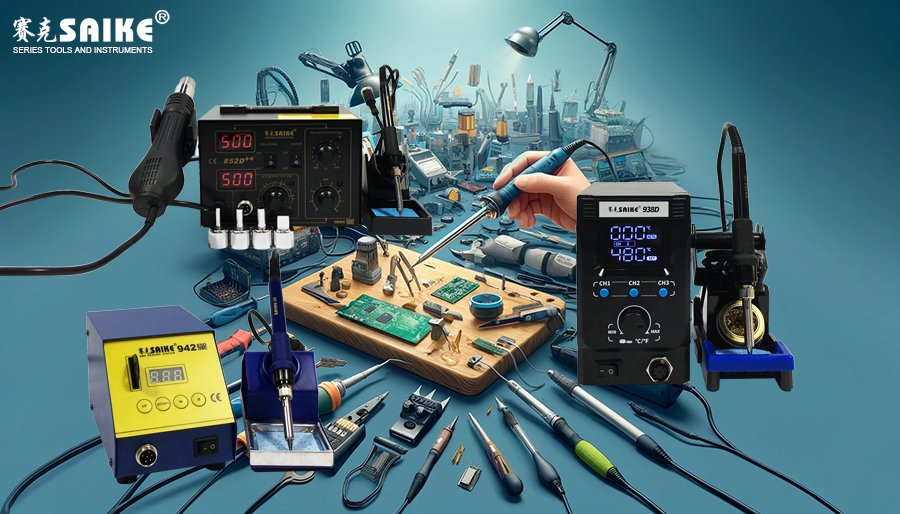
SK-YJ000DLT-KP 100003
Soldering irons are indispensable tools in the electronic manufacturing and maintenance industries, used for welding circuit boards, connecting wires, and electronic components. Due to their widespread applications, there are various types of soldering irons on the market, each with unique characteristics and suitable scenarios. This article will introduce the common types and characteristics of soldering irons in detail, helping users make the right choice based on their needs.
I. Basic Soldering Iron
The basic soldering iron is the most fundamental type, commonly used for household and small repair work. Its characteristics are simple structure, low price, and suitability for beginners and occasional use.
– Features:
– No temperature adjustment function, single temperature output.
– Lightweight, easy to carry and use.
– Low cost and simple maintenance.
II. Adjustable Temperature Soldering Iron
The adjustable temperature soldering iron allows users to adjust the temperature based on different welding needs, suitable for a wider range of applications, from welding electronic components to more complex electronic projects.
– Features:
– Equipped with a temperature adjustment knob or digital control panel.
– More stable heat output and wider applicability.
– Suitable for professional applications that require precise control of welding temperature.
III. Soldering Station
The soldering station is a complete welding work system, including a temperature-controllable soldering iron and a base with power and temperature control. It is commonly seen in professional electronic laboratories and production lines.
– Features:
– High-precision temperature control, providing stable heat output.
– Can be equipped with various accessories, such as hot air guns and desoldering pumps.
– Durable and suitable for long-term continuous use.
IV. Battery-Powered Soldering Iron
The battery-powered soldering iron provides wireless convenience, suitable for working in places without convenient power outlets.
– Features:
– Extremely portable, suitable for outdoor or mobile occasions.
– Battery life and heating capacity may be limited.
– Usually designed smaller, suitable for quick minor repairs.
V. Reflow Soldering Iron
The reflow soldering iron is usually used for welding SMD (surface-mounted device) components, which can heat and weld without touching the components.
– Features:
– Uses hot air for welding, suitable for sensitive or small components.
– Provides uniform heat distribution, reducing thermal stress.
– Often equipped with temperature and wind speed adjustment functions.
VI. Conclusion
The choice of soldering iron should be based on specific application needs, including the complexity of the work, precision requirements, budget, and frequency of use. From basic soldering irons to high-end soldering stations, each type of soldering iron has its unique advantages and suitable scenarios. Understanding the characteristics of these types can help users make more suitable choices, thereby improving welding efficiency and quality.


